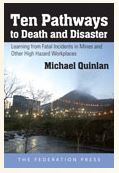Successful safety management relies on communication. Sometimes this is informal, as in prestart meetings or toolbox talks; sometimes it is formal, such as with Annual Reports and legacy documents. It is important for occupational health and safety (OHS) professionals to understand how to communicate in these two formats and to address different audiences and readerships.
The latest Australasian Reporting Awards were handed out last week with the Civil Aircraft Safety Authority garnering the Work Health and Safety Reporting Award for 2015. Safe Work Australia’s Chief Executive Officer, Michelle Baxter, said, about the award:
“By including high quality work health and safety information in your annual report, you can establish your organisation as a leader in work health and safety, one in which work health and safety is not an ‘add on’, but integrated into business decisions and processes.”
In terms of Annual Reports, the OHS professional needs to be involved early in the report writing process rather than, as seems to happen most of the time, leaving it to the company secretary or the Communications unit. Annual reports need a consistent


